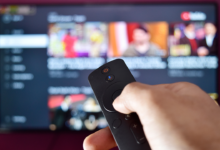Bell selects Ericsson, not Huawei, to build 5G cellular network
BCE Inc. has decided to partner with Swedish telecommunications equipment maker Ericsson to build its 5G network in Canada.

The Montreal-based telecom firm said in a press release Tuesday that it will use Ericsson equipment to build its next generation cellular network, known as 5G. Ericsson is already a component supplier for Bell’s existing networks, including 4G, but 5G will allow the network to handle far more quantities of data, faster.
“Bell’s 5G strategy supports our goal to advance how Canadians connect with each other and the world, and Ericsson’s innovative 5G network products and experience on the global stage will be key to our rollout of this game-changing mobile technology across Canada,” BCE president Mirko Bibic said, citing Ericsson’s existing role in 92 other 5G cellular networks around the world.
The decision means BCE will not be using 5G equipment from Huawei, a Chinese equipment maker that is currently installed on existing networks around the world, including Bell’s. But many countries around the world say Huawei’s close relationship with the Chinese government could expose cellular networks to spying.
The United States and Australia have forbidden telecom firms in those countries from working with Huawei to develop their 5G networks. The Canadian government is currently mulling whether to allow Huawei to work on Canadian 5G networks, as part of a comprehensive governmental review of cybersecurity protocols.
BCE rival Rogers also announced in 2018 that it would work with Ericsson on its 5G network. Telus, meanwhile, announced this past February that it would use Huawei equipment in its 5G network.
What is 5G?
The world of tech is moving at a breakneck pace. Right now a galaxy of media and information fits neatly on the phone in your pocket and vehicles are beginning to drive themselves.
If you think things are moving too fast, buckle up, because a new 5G cellular network is just around the corner and it promises to transform our lives by connecting nearly everything to a new, much faster, reliable wireless network.
The first networks won’t be operational for at least a few years, but technology and telecom companies around the world are already planning to spend billions to make sure they aren’t left behind, says Lawrence Surtees, a communications analyst with the research firm IDC.
The new 5G is no tentative baby step toward the future. Rather, as Surtees puts it, “the move from 4G to 5G is a quantum leap.” Imagine you are waiting to get on a plane for a long-haul flight and you want to download the latest Star Wars movie. Today, that process might take you about an hour to get a short HD movie onto your phone, as 4G networks can move about 1 gigabit per second and most consumers actually get much lower speeds. On a 5G network of the future, however, that same movie will be on your phone or tablet in just seconds.
And it can do a lot more than just making your downloads faster. The 5G network will allow more devices to communicate more data. They will be an integral part of the system that brings us promised connected cities, fully autonomous vehicles and augmented reality portrayed in movies like Minority Report.
Connecting ‘smart cities’
In a University of Toronto laboratory, Professor Alberto Leon-Garcia researches connected vehicles and smart power grids. “My passion right now is enabling smart cities — making smart cities a reality — and that means having much more immediate and detailed sense of the environment,” he said.

Faster 5G networks will assist his projects in many ways, by giving planners more, instant data on things like traffic patterns, energy consumption, various carbon footprints and much more. Leon-Garcia points to a brightly lit map of Toronto in his office, and explains that every dot of light represents a sensor transmitting real time data.
Currently, the network is hooked up to things like city buses, traffic cameras and the city-owned fleet of shared bicycles. He currently has thousands of data points feeding him info on his map, but in a 5G world, the network will support about a million sensors per square kilometre.
Not just science fiction
It may sound far-off and futuristic, but 5G is just around the corner. Already, infrastructure is being built, lines of code are being written, and the protocols that will govern it all are being debated and finalized.

Canada’s major wireless carriers are beginning to plan and build out their own 5G networks, too. Rogers has outfitted the entire Rogers Centre with dozens of 5G antennas in the hope of bringing a new level of event experience to their customers. Bell and Telus are working on similar plans to test and build their own networks .
There are still some hurdles to get over. Antennas will need to be much closer together, meaning more will be required. That could get expensive, especially in rural and remote areas. Also, it will take a while to build the new network outside of urban centres and 5G-capable devices will be, at first, limited and expensive
Consumers and shareholders will share those costs — but it doesn’t necessarily mean your cellphone bill will go up dramatically in a 5G world. according to Surtees, “It’s going to appear with 5G as if bandwidth is almost infinite.”
CBC/MS








Redes Sociais - Comentários